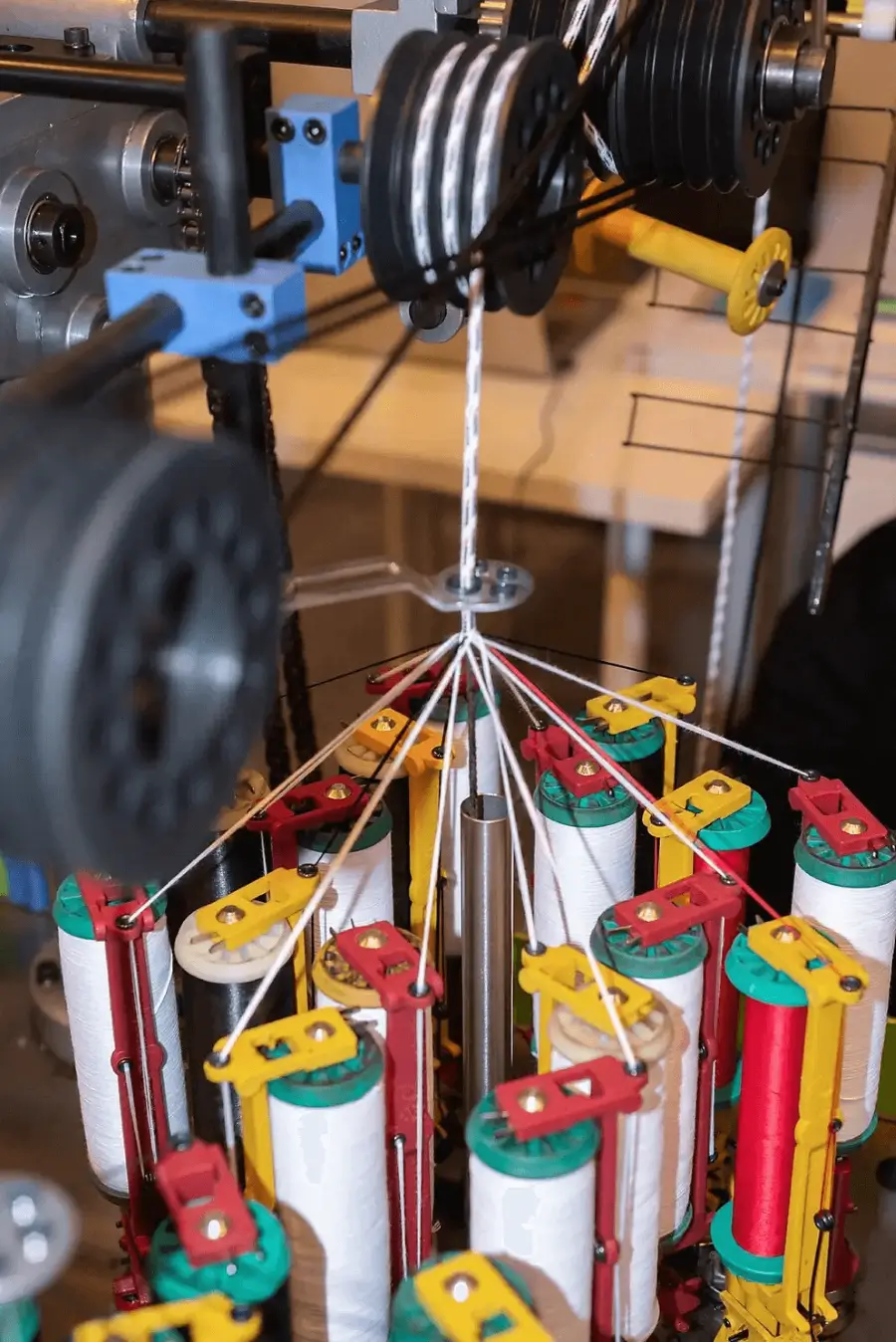Table of Contents
ToggleIntroduction
Hitting a muddy trail is a blast—until the tires start spinning. This post breaks down the best 4×4 recovery gear so, even rookie drivers can get moving again. You’ll discover the must-have off road recovery gear, learn what each item does, and even get the steps to pack a custom 4×4 recovery kit. Follow the tips inside, and you can park the worry and keep the fun rolling. Adventure on!
What Makes 4×4 Recovery Gear Essential For Beginners?

You might be driving smoothly, but suddenly you could get stuck in thick mud or face a steep, sandy slope. For such situations, must haves for off road trucks include 4×4 recovery gear. That’s why every off-road vehicle should have recovery gear.
Recovery gear includes recovery solutions towing equipment. If you get into trouble, the right gear can prevent the trip from becoming dangerous. These off road essentials are crucial for safety. A strong winch can pull a heavy truck out of trouble easily.
This is an important part of vehicle recovery. Traction boards can be placed under tires to help you get out of sandy areas quickly. These are essential for 4×4 recovery. Having both a winch and traction boards can prevent you from getting stuck and wasting time.
These are key pieces of 4×4 recovery gear. Having this gear makes drivers feel more confident in difficult situations. This is important for off road recovery.
How To Pick The Best 4×4 Recovery Gear For Newbies?
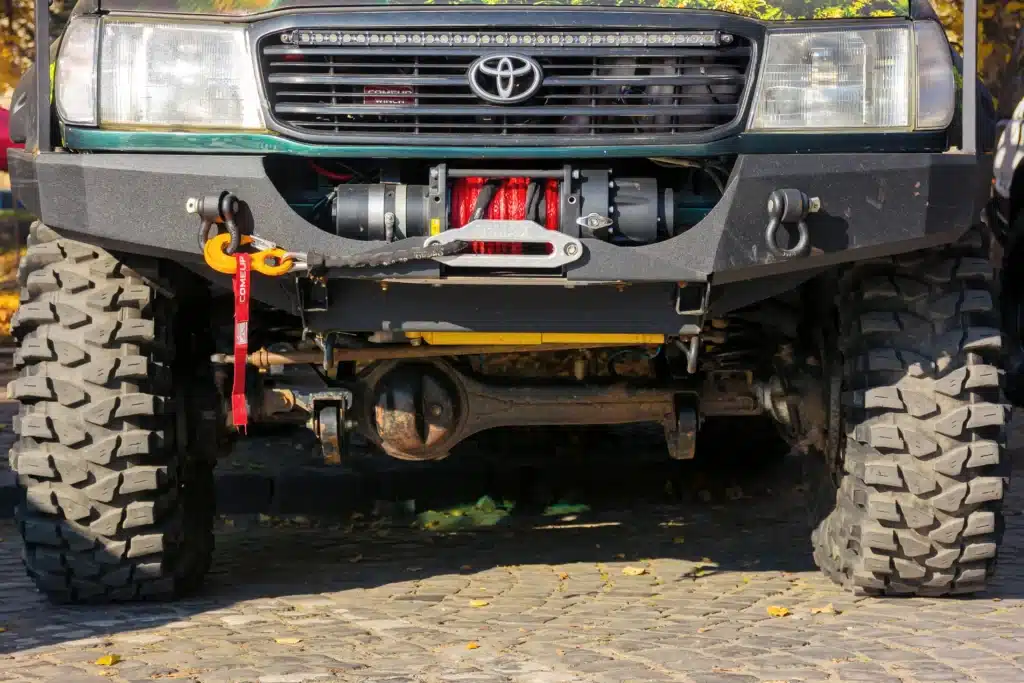
Choosing the right 4×4 recovery gear keeps your ride safe. It makes your weekends worry-free. This guide helps you pick the best off road recovery kit. Even new drivers can choose well.
GVWR (Gross Vehicle Weight Rating)
Every truck has a GVWR number. Find it on a sticker inside the driver door. Choose 4×4 gear rated higher than this number. For example, use a 12,000-pound winch for an 8,000-pound Jeep. This keeps you safe during pulls. Shackles and straps should be stronger than your GVWR. Check the owner’s manual if you can’t find the sticker.
Breaking Strength
Rope breaking strength is the most weight a recovery rope can take. It snaps if it goes over this. Pick a recovery rope 2 to 3 times your vehicle’s weight. For a 3,500-pound vehicle, use an 8,500-pound recovery rope. Replace it if used near its limit.
Working Load Limit (WLL)
WLL is the safe weight limit for recovery gear. Pick recovery gear like the best recovery strap higher than your vehicle’s weight. For a 1,500-pound UTV, use a 2,000-pound line. Check the label to stay safe.
Standards Compliance
Choose recovery gear with standards like ISO 9001. This means it’s tested. Brands like ARB, known for the best recovery ropes, use these. Certified gear keeps you safe. Cheap gear might break.
Vehicle Compatibility
Ensure 4×4 recovery gear fits your vehicle. Check the owner’s manual for recovery points. Don’t attach to plastic. Use the right shackle size. Know your setup for easy recovery.
Intended Terrain
Pick gear for the terrain. Use traction boards for mud. Use the best kinetic recovery rope for sand. Use the best tow rope for snow. Use winches for rocks. Plan ahead.
Ease of Use
Pick easy-to-use off roading essentials. Quick setup helps. Practice at home. Simple gear makes recovery fun.
| Gear Type | GVWR Capacity (lbs) | Breaking Strength (lbs) | WLL (lbs) | Standards Compliance | Vehicle Compatibility | Intended Terrain |
| Snatch Strap | 12000 | 24000 | 4800 | ISO 9001, AS 1418.1 | Jeep Wrangler, RAM 2500 | Mud, Sand |
| Kinetic Rope | 10000 | 20000 | 4000 | ASME B30.26 | Ford F-150, Toyota Tacoma | Snow, Sand |
| Winch | 15000 | 30000 | 6000 | ISO 9001, SAE J706 | Land Rover Defender, Nissan Patrol | Rock, Mud |
| Soft Shackle | 8000 | 16000 | 3200 | ASME B30.26 | UTV, ATV | Sand, Gravel |
| D-Ring Shackle | 14000 | 28000 | 5600 | ISO 9001, AS 2741 | RAM 3500, Chevy Silverado | Mud, Rock |
| Traction Board | 10000 | 20000 | 4000 | ISO 9001 | Jeep Gladiator, Toyota 4Runner | Mud, Snow |
Table on Choosing The Best 4×4 Recovery Gear For Newbies!
What Types Of 4×4 Recovery Gear Exist?

Hey there, rookie mud lovers! Today we’re breaking down the must-have 4×4 recovery gear. In short, a few simple tools can yank you out of a jam. Let’s dive in.
Snatch Straps
A recovery strap is basically a heavy-duty snatch rope with an attitude. For instance, when you hook it up, the nylon webbing stretches, then snaps back to fling your truck free. Therefore, pick one with a Minimum Breaking Strength of at least 3 to 3 times your rig’s Gross Vehicle Mass.
Always attach the recovery tow straps to properly rated recovery points. Similarly, remember to wear gloves before the pull happens.
Kinetic Ropes
A kinetic recovery rope adds a friendly stretch. Subsequently, they apply gentler pulls, keeping the shock in check. For this reason, choose a model made of Nylon 6.6 or UHMWPE.
The minimum breaking strength should be two to three times your vehicle’s gross mass. In addition, hook up using soft shackles. These are better than old tow ropes. Brands like Duracordix build them tough. Pull safely and stay clear.
Electric Winches
An electric recovery winch turns your 4×4 into its own tow truck. Specifically, a unit rated at 1.5 times the gross vehicle weight will yank an 8,000-pound truck. Hand-held remotes keep you outside the danger zone. Furthermore, it thrives on solo missions. A good winch recovery kit is essential here, as is an offroad recovery kit with tree saver. Crank it tight and trust the gear.
Traction Boards
Traction boards rescue spinning tires. First, lay down arb traction boards or similar composite planks. Then, ease the throttle. Each board can carry around 15 tons. Indeed, UV-proof teeth grip stubborn rubber. These lifesavers belong in every serious 4×4 recovery gear kit. Get unstuck without waiting for a buddy.
Bow Shackles
Off road recovery shackles lock a recovery strap to a vehicle point. The curved bow of a towing ring spreads force evenly. Importantly, every rated part has the capacity number stamped right into the metal. Screw-pin versions twist on tight, but then back them off a quarter turn so the pin seats.
However, always check the rating. Before you hook on, look for tiny cracks. A sturdy shackle can prevent an expensive mishap.
Snatch Blocks
Slip the winch cable through a snatch block, also known as a recovery gear pully. As a result, the drum feels twice as strong. Most modern pulleys are rated for heavy loads. Point the block at a tree and the rope pulls straight. Finally, toss one in your off road recovery bag, because extra pull never hurts.
Hi-Lift and Hydraulic Jacks
A Hi-Lift handle cranks through 7000 pounds. Alternatively, an ARB hydraulic model lifts with smooth, controlled height. Either tool is found in a serious recovery kit. Thus, choose one to get your rig out of a scrape.
Air Compressors
Air compressors reinflate tires. A 12V unit with 150 PSI pumps fast. You need durable hoses for rough trails. Furthermore, brushless motors last longer in this 4×4 recovery gear. They’re perfect post-mud in your UTV recovery kit. Consequently, you can inflate safely without a gas station.
Tyre Deflators
Tyre deflators drop tire pressure fast for better grip. Specifically, screw-on brass ones hit 10 PSI accurately. You air down for sand or snow. In fact, they are small but mighty in any recovery kit, like a saber kit. You must pair them with an air compressor in your 4×4 recovery gear. Deflate smartly and roll free.
Recovery Gloves
Recovery gloves shield your hands from cuts or burns. Synthetic fabric with reinforced palms takes impacts. You wear them handling the best tow straps or a rhino USA kinetic rope. Additionally, high-visibility colors help in dim light. They are basic 4×4 recovery gear for safety. Protect yourself while you work.
Recovery Damper
Recovery dampers stop tow straps from whipping if they snap. As an illustration, this vinyl blanket sits mid-strap. It absorbs energy so you stay safe during pulls. It is crucial 4×4 recovery gear. Therefore, add it to your warn recovery kit for peace of mind.
Bridging Ladders
Bridging ladders span gaps or boost traction. Aluminum ones handle 10,000 lbs. You use them as ramps or boards. In other words, they are neat 4×4 recovery gear for rough trails. Fit them in your jeep recovery kit. Even without the best recovery rope, you can cross anything with confidence.
First-Aid Kit
First-aid kits treat trail injuries fast. You should pack bandages, antiseptics, and a tourniquet. Moreover, you need gloves and scissors. Check dates yearly for your arb recovery kit. It is life-saving 4×4 recovery gear. Similarly, add it to your matt’s off road recovery rope kit. Stay prepared for emergencies.
Shovel
Shovels dig tires out or clear paths. Steel blades move mud easily. You build ramps or anchor points. Indeed, serrated edges cut roots. This is essential 4×4 recovery gear. It is a must-have for your rhino recovery gear stash. Dig in and escape any mess.
Our Top Picks for 4×4 Recovery Gear!
Looking for 4×4 recovery gear? The sort that won’t let you down. In short, it is for when the trail gets slippery. For example, check out Duracordix’s kinetic recovery rope. It stretches. Therefore, your rig won’t get jolted. Next, swap a steel cable for a synthetic winch rope.
You will notice the difference. More safety, less worry. In addition, grab a soft shackle. It’s light and tough. It won’t pinch your fingers. A good snatch strap turns a dead stop into a quick pull.
Also, a polyester tow strap keeps dragging anything. Finally, stash it all in an off road recovery bag kit. You have turned panic into a gear-up moment.
| Item | Material | MBS (lbs) | WLL (lbs) | Stretch (%) | Capacity (lbs) | Weight (lbs) |
| Snatch Strap | Nylon | 20000 | 6667 | 20-30 | 15000 | 3 |
| Kinetic Rope | Nylon 6.6/UHMWPE | 28600 | 9533 | 30-40 | 20000 | 2.5 |
| Electric Winch | Synthetic Rope | 18000 | 12000 | 0 | 12000 | 60 |
| Traction Boards | Polypropylene | 33000 | 11000 | 0 | 33000 | 7.5 |
| Bow Shackles | Steel | 13227 | 4409 | 0 | 4409 | 1 |
| Snatch Block | Aluminum | 20000 | 10000 | 0 | 20000 | 4 |
Table on What Types Of 4×4 Recovery Gear Exist!
Best Materials In Durable 4×4 Recovery Gear!

You need tough recovery gear made from best materials. Smart off-roaders trust it. Start exploring the key materials here.
SK75 Dyneema/UHMWPE
Ropes made from SK75 Dyneema are key 4×4 recovery gear. They feel weightless. In addition, a synthetic recovery rope matches the strength of steel lines. It has less heft. The strands snap clean. Therefore, you are less likely to catch someone in the fallout. Also, a braid resists kinks that ruin other ropes. You can trust this gear.
Grade 80 Alloy Steel
Grade 80 alloy steel is another type of 4×4 recovery gear. Its strength is over 15,000 pounds. Moreover, the finish keeps rust at bay. Big D-ring shackles are made from the metal. They slot neatly into tow straps. Thus, you can quit second-guessing. High-grade steel survives season after season.
6061-T6 Aluminum
6061-T6 aluminum is strong. It is also lightweight. You will spot it in recovery rings. The metal can handle a 35,000-pound pull. Rain and mud will not turn it to mush. Therefore, less weight makes a real difference. Fairleads made from this alloy slide rope without snagging. Consequently, you get smooth pulls.
High-Tenacity Nylon
High-tenacity nylon gives a tiny stretch. This can save a bumper. For example, kinetic straps soften the jolt from a yank. This is essential 4×4 recovery gear. Pros trust the upgrade. You can match it with a soft shackle. Then, you get a lightweight union. When seconds count, grab this stuff.
1000D Polyester
1000D polyester is tough. Recovery bags are lined with the fabric. Tear strength is around 5,000 pounds. In addition, water beads and rolls away. A rhino USA tow strap can slide inside. Cleanup is a quick hose-down. This fabric provides storage that outlives the trip.
Aramid (Kevlar) Fibers
Aramid fibers are known as Kevlar. Kevlar rope shrugs off 420°C. It is ten times stronger than steel. Furthermore, it resists cuts and acids. Pros run it through winches. You should swap standard lines for this.
Tough ABS or Composite Plastics
Tough ABS plastic is used for recovery boards. They weigh almost nothing. For instance, one set can heft a 10,000-pound truck. The material also shrugs off rain and sun. You can add a composite surface for tire traction. Then, just toss a pair in the trunk.
Durable Powder Coating
Powder coating is money well spent. Winch hooks and shackles wear this finish. Unlike paint, the coating does not chip. Moreover, it protects from salt spray and rust. Rocks do not scratch it easily. This finish almost never misses the list. The coating just keeps shining.
Corrosion-Resistant Coatings
Corrosion-resistant coatings protect steel. A coating on a tow shackle stops rust. Next, hot-dip galvanizing thickens that shield. Swapping to a coated hook can double its lifespan. Therefore, you will trust that gear longer.
Reinforced Stitching
Reinforced stitching gives straps a strong grip. Heavy-duty thread can handle 3,000 pounds. It will not fray. Finally, tactical bags and recovery straps benefit from this. Gear that stays whole saves you time and money.
| Material | Tensile Strength | Breaking Strength | Corrosion Resistance | UV Resistance | Heat Resistance | Weight (Density) |
| SK75 Dyneema/UHMWPE | 43 cN/tex | 10,000 lb | High | High | 144-152°C | 0.97 g/cm³ |
| Grade 80 Alloy Steel | 2.4 GPa | 15,000 lb | High | Moderate | >500°C | 7.8 g/cm³ |
| 6061-T6 Aluminum | 310 MPa | 35,000 lb | High | High | 650°C | 2.7 g/cm³ |
| High-Tenacity Nylon | 9.5 cN/dtex | 2,000 lb | Moderate | High | 250°C | 1.15 g/cm³ |
| 1000D Polyester | 9 cN/dtex | 5,000 lb | High | High | 260°C | 1.38 g/cm³ |
| Aramid (Kevlar) Fibers | 29 cN/dtex | 10,000 lb | High | Low | 420°C | 1.44 g/cm³ |
| ABS/Composite Plastics | 40 MPa | 10,000 lb | High | High | 100°C | 1.04 g/cm³ |
Table on Best Materials In Durable 4×4 Recovery Gear!
When Will You Need 4×4 Recovery Gear?

Heavy-duty, purpose-built 4×4 recovery gear is no longer a luxury; it is essential. In the following texts, we will discover typical field situations in which carrying the correct off road recovery tools become a safety.
Stuck in Mud
Deep muck can swallow a vehicle. First, a stout winch can yank a truck out. Clearing the muck with a shovel helps. Then, lay traction boards under the tires. This gives something solid to chew. Also, an entire off road recovery kit is good for this. Next, drop the air pressure to 15 PSI. This improves bite. A pair of gloves protects hands. So, reliable 4×4 recovery gear is a must.
Soft Sand
Soft sand swallows tires. You may vanish in seconds. So, let air out to 10 psi. Carry traction boards. And slide them under the wheels. This helps bite into the surface. A land anchor gives the winch something to pull. Next, use an off road recovery rope. A yank from it is smooth. Patience is the secret. One good tug turns a dead end into an open road.
Sharp Rocks
Sharp rocks can high-center a truck. One careless crawl and a sidewall is toast. Grab a Hi-Lift jack. Then, slide a shovel under the belly. Hook recovery straps to certified tow points. This tests your 4×4 recovery gear. Every yank feels like a test. Lifting is easier with a recovery strap kit. So, moving forward is key.
Heavy Snow
Heavy snow swallows your tires. A pair of traction boards slides handy. A sturdy winch also pulls you forward. Then, scoop snow from around the wheels. After that, drop tire pressures to 12 PSI. A stretchy recovery rope kinetic lets momentum do the work. Thus, the gear turns the setback into a story.
Steep Inclines/Declines
Steep hills flirt with danger. A winch sits ready to pull you back. In addition, a Hi-Lift jack can lift the truck. Use tree-saver straps to anchor. An off road recovery kit usually hides straps and gloves. Consequently, always double-check winch ratings. The right gear makes the climb routine.
Loose Soil or Gravel
Loose soil can swallow you. First, drop traction boards under each wheel. A good recovery rope works smoothly. Also, shovel away any branches first. A slow yank beats a quick jerk. Vehicle recovery straps do the heavy lifting. The right gear can keep the vehicle from tipping.
Slippery, Wet Surfaces
A wet trail can make you slide. So, traction boards deliver an instant bite. A winch or a stout recovery rope will yank you free. In addition, gear should shrug off water. Gloves matter. Thus, lean on trusted tools.
Deeply Rutted Paths
Ruts can swallow your undercarriage. Keep bridging ladders handy. They turn a canyon into a driveway. Then, level the dirt around the rubber. Traction boards act like jack stands. A recovery strap helps. Because ruts love to topple a vehicle.
Obstacle Clearing
One gnarled tree can stop you. Clear the little twigs with a shovel. A winch drags the trunk sideways. Use tree-saver straps on the anchor. An axe handles the small stuff. Therefore, bring helpers in the form of rope and grit.
Water Crossings
Every puddle hides a disaster. A hidden current can shove a pickup. Check the depth. If the stream surprises you, then lean on a winch cable. Good gear shrugs off water. Keep your 4×4 recovery gear close.
Vehicle Rollover
A rollover sends a shock through you. Rigging supplies add stability. A winch coils tight to a tree. Next, a Hi-Lift jack palms the frame. It inches the body back onto the tires. Shackles lock the system. An off road recovery kit stacks the odds. But, skill edges equipment.
Mechanical Failure on Trail
Trails have a knack for breaking parts. A compressor can shape a flat tire. A stout tow strap then shuttles the driver. Wrenches and pliers belong in every kit. Vehicle recovery straps handle the tugging. Prep decides if you finish the weekend.
Tips To Maintain Your 4×4 Recovery Gear!
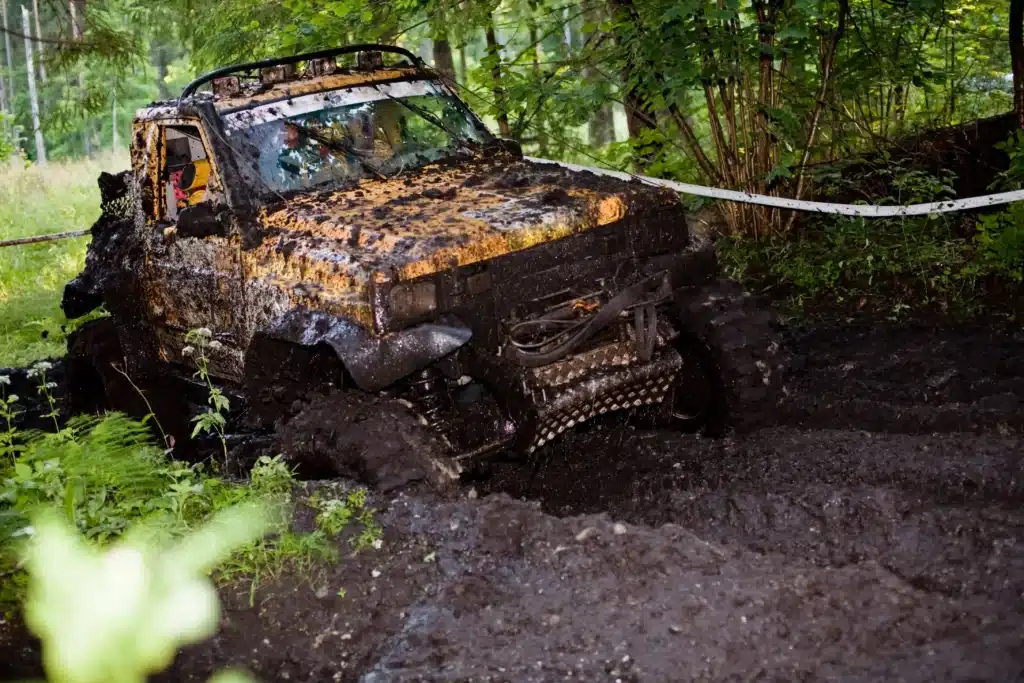
Taking good care of your 4×4 recovery gear keeps it working when things go sideways. Find how!
Rinse After Use
Mud, salt, and dust grind on rope and strap fibers; consequently, a quick blast with a garden hose washes away damage. Let all recovery gear dry completely before you stow it because rough grit inside a nylon loop can chew through the material.
Inspect for Damage
Glance at every strap, hook, and shackle, for one frayed edge or bent pin is a problem for your off road gear. Therefore, repeat the drill after the rescue. Finding trouble early shrinks the mess into a minor delay.
Store Gear in a Dry Place
Moisture is the enemy of towing gear; for this reason, clean the gear and let it air-dry after a pull. Then, tuck everything into a dry garage, since humidity inside a pouch weakens fabrics and corrodes steel.
Protect Equipment from UV Rays
Direct sunlight robs synthetic fibers of strength; thus, store 4×4 recovery gear in the shade. Ultraviolet light attacks materials; for instance, a rope exposed long-term can lose its pull ratings. As a result, slip the gear into the garage when you are done.
Lubricate Moving Parts
Winches and jacks in your recovery equipment demand grease; accordingly, slather a thin film on cogs so nothing seizes. Run oil down a wire rope to stave off rust, otherwise, the parts will freeze if they go dry.
Replace Worn Components
A ripped strap or a cracked shackle can make your 4×4 recovery gear dangerous; therefore, act once you see the easy-to-spot red flags. In addition, stash fresh spares in your kit. Healthy parts save you a second trip.
Follow Manufacturer’s Manual
A glance at the manual beats trial and error; similarly, instructions spell out how to treat gear right. You should fold a copy and slide it into your recovery kit bags, due to the fact that winch manuals warn about weight limits you might otherwise ignore. Skipping the small print can lead to damage.
Check for Corrosion
Rust can burrow into steel, while hooks and shackles forfeit strength when moisture is around. For that reason, grab a wire brush and knock off the flakes. A thin coat of rust inhibitor after cleaning seals out moisture, so checking regularly is a habit.
Keep Gear Organized
No driver loves hunting for gear, and a tidy bag can save seconds. As a result, identify every piece with labels. Put shackles in their own section; in fact, panic has nowhere to stick when order beats clutter.
How To Use 4×4 Recovery Gear Safely?

Off-roading hearts race. Smart use of 4×4 recovery gear keeps the excitement fun, not frightening. You’ll find the tricks here!
Gear Up Right, Every Time
Heavy-duty gloves feel bulky until a steel cable frays; moreover, safety glasses keep that same cable from stinging your eye. Tough-toed boots cushion a ten-pound shackle that decides your foot might look softer than mud, so the wrong moment teaches these lessons fast. Therefore, start every recovery tow already protected.
Draw the Line
Picture a circle that stretches past the end of a thirty-foot strap, for this reason, make that ring one-and-a-half lengths from the hook. Step inside, and a breaking strap may become your last memory; thus, maintain that barricade while the recovery winches do their slow work, and you stay sane.
Talk First, Pull Later
Words matter when wire rope winds tight; indeed, signal hands or a radio can cut out the guesswork. A spotter announces READY, the driver answers GO, then you listen for STOP because the tension climbs faster than the conversation; before launching, double-check that shackle, fairlead, and recovery strap.
Verify Connections
Before you start yanking on anything, double-check those links; for instance, grab a rated shackle and hook it to a factory recovery point. Give that big 19-mm bolt a snug turn as it can hold about 4.75 tons. One bad link, however, turns the whole tow recovery into a gamble, so stay out of the danger zone.
Maintain a Safe Distance
Back away as soon as the strap is under strain because you are safer two car lengths away. Leaning on a line that handles 10,000 pounds is like standing in front of a slingshot; if the hook gives, that snap can cruise past you at nearly 100 mph. The rule is simple: eyes on the job until you figure out the next move with your winching tools.
Correct Procedures & Training
Good training is quicker than luck, so find a local course that covers 4×4 recovery gear. Rehearsing the steps once a season is cheaper than replacing a busted axle. Take a 3-ton pull seriously since shortcuts are the first sign of trouble.
Regularly Inspect Equipment
Run your palm along a 9-meter strap before the first drive as a tiny fray can turn huge. Steel shackles that spike or show chips are one trip away from disaster for your 4×4 recovery gear. Anything with more than 2 millimeters of wear gets shelved, no exceptions.
Never Exceed WLL
Every piece of gear lists a Working Load Limit, and a winch rated for 2 tons simply cannot pull more without danger. Push it past that mark, and a 4,000-pound shock could snap the cable. Stick to the numbers, and your recovery chances improve every single time.
Recovery Situation
Stop and look at the mess before grabbing a strap, and figure out why a 3-ton truck is buried to the axles. A twenty-foot tow strap is plenty long for that crawl out. Choosing the right piece on the fly keeps tools from going sideways; additionally, ease into the pull instead of yanking.
Top Features In Modern Recovery Gear!
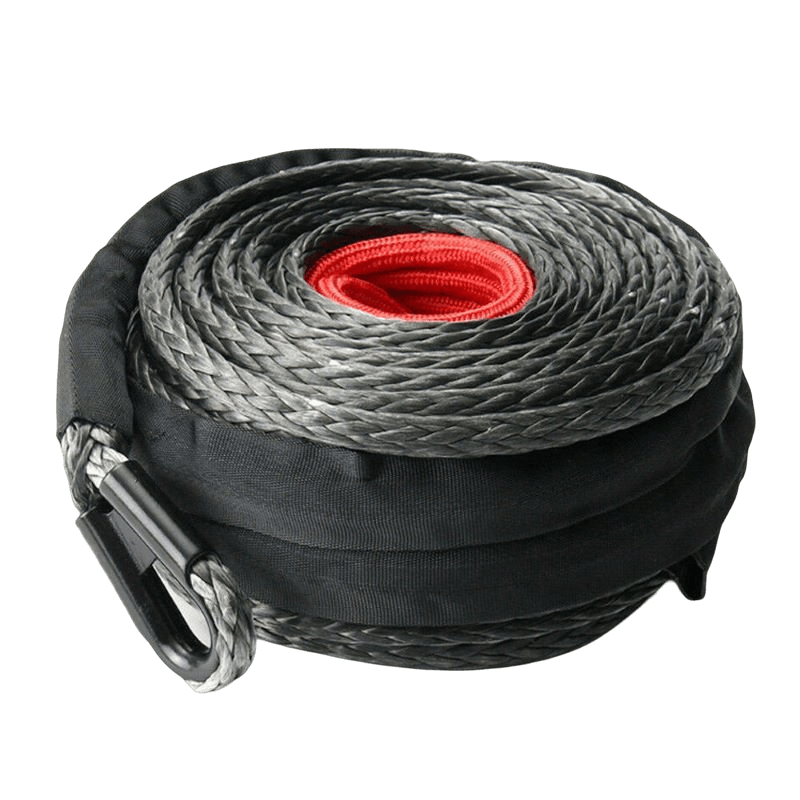
New features in today’s recover gear are so user-friendly that even rookies find themselves pulling off successful rescues. Consequently, modern tools from Duracordix add safety and trim downtime. Let’s explore the new features.
Compact Design
Recovery gear no longer eats half your cargo space, which is a relief. For example, portable winches and fold-flat traction boards slide behind seats or tuck into a side cubby. A 10000-pound winch now weighs the same as a medium suitcase, so you can stash it next to the first-aid kit. When 4×4 recovery gear packs small and light, you will find it faster and use it more often.
Quick-Deploy Systems
A Quick-Deploy System pulls you out before worry sets in; for instance, our kinetic recovery straps come with stitched loops that click together on instinct. Most modern winches hide under fast-mount brackets, consequently latching on in a blink. A 17,500-pound snatch strap laughs at rough patches, because today’s recovery tools turn panic into an easy fix.
Multi-Functional Use
Multi-Functional Use lets one piece of winch gear share the workload, thus saving space. A quality winch becomes a hoist, and traction boards can double as makeshift shovels. Smart recovery accessories keep weight low but options high, therefore you can tackle sand, snow, and log jams with half the fuss.
Wireless Controls
Wireless remotes take the guesswork out of winching, thus allowing you to stand a full 100 feet back and operate the gear without a tangle of cables. That distance lets you dodge any snap that might happen, while the control signal stays steady. With wireless controls, safety first is how reliable 4×4 recovery gear actually works.
Built-in Sensors
Smart sensors talk before something breaks, so an alert pops up the moment a load gets too high. Color-coded tension stripes on a Duracordix Nylon Snatch Strap also tell you how close you are to trouble. This warning saves cables and, more importantly, saves you, because quality gear not only pulls, it thinks.
Modular Components
Modular gear gives you the freedom to customize on the spot; for example, you can swap out a steel cable for a light Duracordix synthetic winch rope. You can also pick shackles rated for 8 tons when the ground changes from rocks to sand. As your skills grow, the gear grows with you, so a recovery kit should never feel locked-in.
Ergonomic Handling
Ergonomic Handling turns a muscle-burning pull into an easy tap. Additionally, grippy pads on shackles stop the metal from slicing your palms. Comfort matters when you’re bracing against a truck buried axle-deep in mud, so a little smart shaping goes a long way toward keeping you in one piece.
Soft Shackle Compatibility
Soft shackles are changing the game, because a single synthetic loop can handle up to 15 tons and still slip into your pocket. Most new recovery gear now comes with slots that welcome these soft connectors, such as an arb soft shackle. The upgrade makes your 4×4 recovery gear kit leaner and more reliable at the same time.
Integrated Safety Features
Tech-packed winches now pull only up to their limit, then stop thanks to built-in auto brakes. Likewise, Duracordix Polyester Tow Straps with reflective threads glow under headlights so you can spot hazards. With equipment like that doing the thinking, the fun part of off-roading can drown out the worry.
Integration of Smart Tech
Modern recovery gear is more than pulleys and rope; indeed, it is now about the smartphone in your pocket. Hook up a Bluetooth winch, and the load gauge sits right on your screen. That 50-foot wireless reach means you can stand back and survey the mess while still running the show, because all that data streams live.
Why Choose Premium 4×4 Recovery Gear?
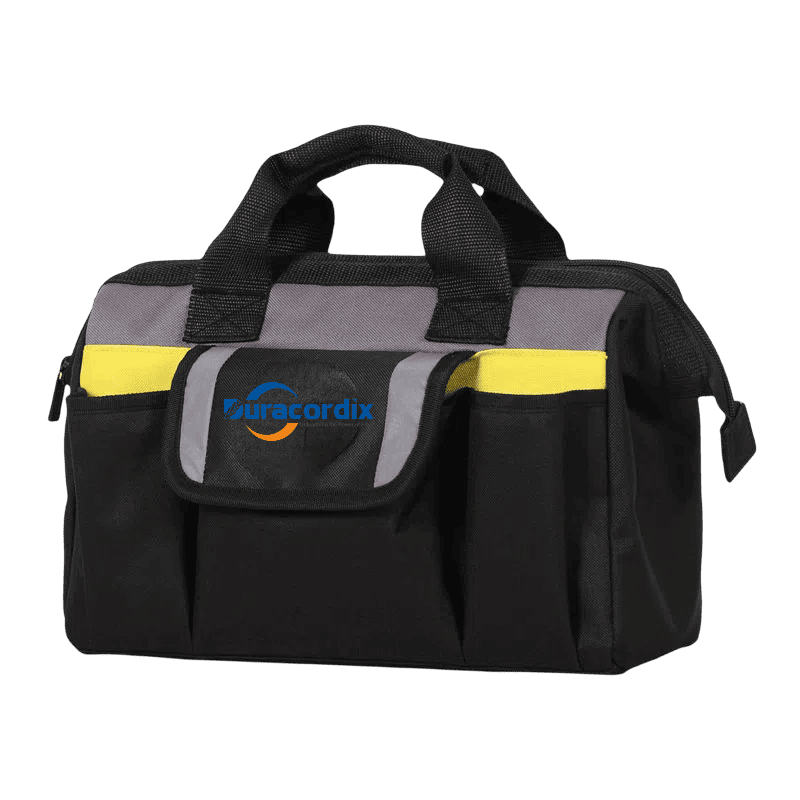
Learn how high-end 4×4 recovery gear delivers superior safety, lasting toughness, and consistent dependability when you venture off the beaten path.
Enhanced Elongation Control
A quality snatch strap stretches smoothly, and it swallows shock. You need the best recovery strap. This means less work for your truck. A rated piece absorbs force evenly because it has a nylon core. The energy spreads out, so you skip the jolts. This is good 4×4 recovery gear.
Superior Corrosion Resistance
Premium recovery tools resist moisture. A steel shackle can fight saltwater, but it will still open easily. A finished tow hook adds another layer, and it keeps strength in muck. The hardware is strong. You will own it for years. This off roading gear helps beginners.
Advanced & Lighter Materials
Modern 4×4 recovery gear uses new fibers. A 2-pound rope can pull 12,000 pounds, yet you can slip it into a pack. The lightness cuts fatigue and also makes grabs safer. New drivers like the low strain. The Duracordix ULTRA TOW ROPE is a great example.
Long-Term Reliability
Good recovery & winch gear is solid and sealed from grit. A robust motor can cycle many times, so dunes or deserts are no problem. Additionally, dust-proof gears keep performance steady. Less downtime saves money. This is a win for new adventurers. A quality recovery gear kit is a friend.
Extended Warranty
A good warranty eases your mind. Premium brands offer long coverage. Some offer 3 years. If your winch has a problem, the maker pays. This net lets you focus on trails. Beginners find comfort in this. With arb recovery, confidence grows.
Reputable Brand
Gear from known names is smart. Find rhino USA dealers for parts. A good winch can tug 15,000 pounds because each unit faces hard tests first. Find good off road accessories near me. Reliable 4×4 recovery gear from brands like Duracordix keeps you moving. It is the best 4×4 recovery gear.
Rigorously Tested and Certified
Reliable 4×4 recovery gear has serious testing. Every piece in a kit is tested. A snatch block can hold 20,000 pounds. An independent lab locks in that rating, which makes it safe. New drivers lean on that approval. Certified tools reduce risks.
Better Performance Under Stress
A good kinetic rope works in a bog. You want the best kinetic rope. It can handle 30,000 pounds after many pulls. That muscle gets a rig out fast. Pair it with a hefty shackle, and the pull stays smooth. Novice drivers feel less scared with tested hardware. Intense trails are not frightening with good gear for off roading.
| Gear Type | Material | Breaking Strength (lbs) | Elongation (%) | Corrosion Resistance (Salt Spray Hours) | Weight (lbs) | Warranty (Years) |
| Snatch Strap | Nylon | 9000 | 20 | 500 | 1.8 | 3 |
| Kinetic Rope | Dyneema | 30000 | 22 | 600 | 2.0 | 5 |
| Soft Shackle | Dyneema | 43500 | 15 | 700 | 0.5 | 3 |
| Galvanized Shackle | Steel | 15000 | 5 | 500 | 1.2 | 2 |
| Winch | Synthetic Cable | 12000 | 10 | 550 | 25.0 | 5 |
| Snatch Block | Alloy Steel | 20000 | 8 | 600 | 3.5 | 3 |
Table on Why Choose Premium 4×4 Recovery Gear?
FAQs On 4×4 Recovery Gear For Beginners!
What’s The Breaking Strength Of Snatch Straps?
Each snatch rope lists a Minimum Breaking Strength (MBS), and this number shows the load it can take before rope breaking. You need a strap with a tow rating 2 to 3 times your rig’s weight. Therefore, check the label before you buy because if there is no number, you should not pull with it.
How To Pick A Winch For My 4×4?
First, find your truck’s Gross Vehicle Weight Rating (GVWR) to select a recovery winch. The line pull rating should be 1.5 times your vehicle’s GVWR. Next, choose between an electric or a hydraulic setup. Steel wire is tough, whereas synthetic rope saves weight. You must choose the right 4×4 recovery gear for the terrain.
Snatch Blocks Vs. Recovery Rings: Which One Do I Grab First?
A snatch block is heavy-duty. In contrast, a recovery ring is aluminum and lightweight, so it fits in tight spots. There is no universal winner since the right tool depends on the situation. Having both a snatch block and a ring is a smart choice for your 4×4 recovery gear. It is good to have redundant recovery gear.
How Often Should I Check Recovery Gear?
You should check your 4×4 recovery gear before and after each trip. Look for frayed rope, rusty shackles, and tears. Afterwards, store the gear in a dry bag to prevent mildew. Frequent checks keep you safe.
What’s The Safe Load Limit For Shackles?
A shackle has a Working Load Limit (WLL), which is the safe load limit for off road recovery shackles. A common 3/4-inch shackle often has a 4,750-pound WLL. You must always read the WLL stamped on the shackle. Also, keep your 4×4 recovery gear clean and in dry storage.
Conclusion
New to off-roading? Start with 4×4 recovery gear that promises safety. A solid tow strap, a winch, or sturdy shackles can pull you and your truck out of slimy spots. Every trail is different. Choose equipment for your ride and route. This is key for 4×4 off road recovery. DURACORDIX offers you a complete solution. Kit up for the dust, mud, and good times ahead.


